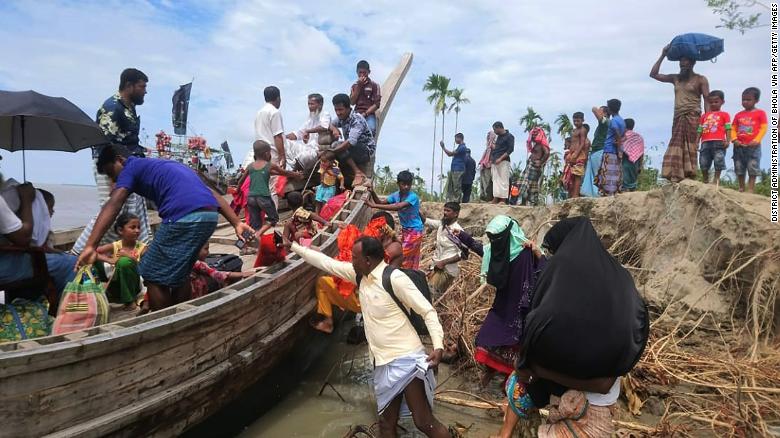
Cyclone Amphan has started to make landfall in eastern India. It is expected to fully make landfall by Wednesday evening local time. Amphan became thestrongest storm ever recorded in the Bay of Bengal on Monday night, though it has since weakened slightly.
Indian officials said that up to 300,000 people in the coastal areas are in immediate danger from potentially deadly storm surges and flooding. Evacuations across the region have been complicated by the coronavirus pandemic, as authorities attempt to maintain strict social distancing rules.
The Indian government has said the cyclone’s strong winds, heavy rainfall and tidal waves are likely to cause “large scale and extensive damage” across multiple districts in West Bengal.
In a tweet, the government said “extensive damage” was expected “to all types of kutcha houses,” which are typically made of flimsy materials like mud and bamboo.
Some damage is also expected to old buildings.
The government said that communications and power poles were also likely to be damaged, as were crops and plantations.
Amphan is likely to make landfall late afternoon local time near the city of Kolkata, West Bengal’s capital.
yCyclone Amphan started making landfall over eastern India at 2.30pm local time Wednesday (5am ET). The storm is expected to make official landfall late Wednesday afternoon local time, near the Indian city of Kolkata which is home to approximately 14 million people and close to the Bangladesh border.Landfall officially occurs when half of the storm’s center is over land.As of Wednesday morning local time, the storm was tracking north in the Bay of Bengal with wind speeds of up to 160 kph(100 mph), according to data from the US Joint Typhoon Warning Center. Amphan became the strongest storm ever recorded in the Bay of Bengal on Monday night, but has since weakened into the equivalent of a strong Category 2 Atlantic hurricane. The storm could still wreak devastation, however. Its cloud field is 2,800 kilometers (1,740 miles) long from tip to tail — that’s the equivalent of the distance from Lisbon to Warsaw. There’s also a risk of powerful storm surges of up to 5 meters (16.4 feet), that could inundate low-lying coastal areas and be catastrophic for millions of people.
In the areas under threat from the cyclone many villagers live in temporary homes with thatched or tin roofs.Up to 33.6 million people in India could be exposed to the storm’s powerful winds, according to the UUS Pacific Disaster Center (PDC). In Bangladesh, 8 million could be in its path, the UN Office for the Coordination of Humanitarian Affairs (UNOCHA) said.












